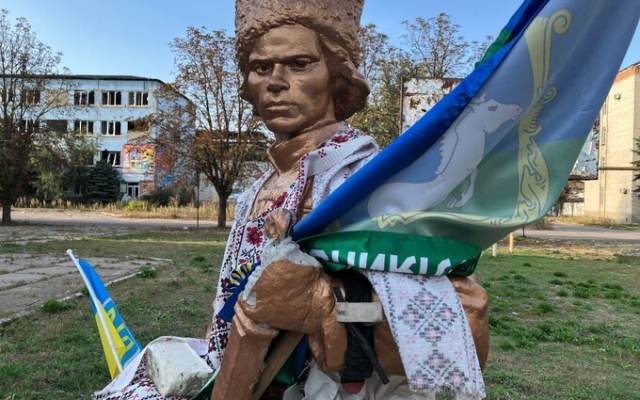 From the very beginning of the invasion, the image of Nestor Makhno was protected with sandbags and hung with flags. Photo: Colin Freeman
From the very beginning of the invasion, the image of Nestor Makhno was protected with sandbags and hung with flags. Photo: Colin Freeman
In Despite fierce competition, the city of Gulyaypole rightly claims to be one of the most war-damaged cities in Ukraine. Located at the forefront of the current counter-offensive, it has been underway since the first week of the invasion, when Russian troops captured its outskirts and were then driven back.
Today, only a tenth of its 12,000 population remains, and most of the buildings lie in ruins from constant shelling. However, for residents who continue to endure it, one inspiring landmark still stands amid the rubble.
A statue of Nestor Makhno — anarchist, revolutionary and freedom fighter — looms over Gulyai-Polye's bombed-out main square. which became a symbol of the struggle for the independence of Ukraine.
Born into a local peasant family, Makhno fought a war here at the turn of the last century, when Ukraine once again became the target of foreign powers. As the leader of the Revolutionary Insurgent Army of Ukraine, he challenged all comers — the Germans, tsarism and, ultimately, the Moscow Bolsheviks.
“Since the beginning of the war, we have neither electricity nor water, and shelling occurs almost every day, but Makhno’s spirit inspires us to continue,” said Sergei Derevyanko, 39, a local mechanic who helps run a volunteer aid center in Gulyai-Polye. “Many people in this city consider him a hero — I remember my grandmother telling me all about him.”
Memories of the “Makhno Movement”
From the very beginning of the war, the defenders of Gulyai-Polye piled sandbags around the statue of Makhno. and dressed him in a traditional Ukrainian shirt. In recognition of the blood shed in the city, a black tourniquet was wrapped around his left hand.
A Ukrainian flag with his image also hangs at Mr. Derevianko's relief center in an underground bunker where volunteers distribute food. and hot drinks for free.
This is the kind of community spirit that Makhno would probably have approved of. As part of his anarchist vision, he founded the Makhno Movement, a system of egalitarian self-governing cooperatives that spread throughout the Zaporozhye region in southern Ukraine.
A Robin Hood-style figure, his social justice crusade against feudal landownership led him to briefly ally with the Bolsheviks. But his more libertarian vision soon came into conflict with Bolshevik empire-building, and later Soviet propaganda portrayed him as a drunken corrupter of revolutionary ideals. “In Soviet times, there was nothing about him here at all,” said Olga Vasilchenkova, 53, another volunteer.
It was only after the fall of communism that a monument to him was erected in Gulyai-Polye, which also began. holding an annual festival in his honor, attracting anarchists from all over the world. It was also canceled several years ago due to problems with drug use, Mr. Derevianko said.
The war, however, prompted local residents to re-embrace his spirit: volunteer defense units named themselves «Luk Makhno» in his honor. Just as the Ukrainian military made improvised tanks from pickup trucks equipped with rocket launchers, Makhno was also a pioneer in making his own weapons. Near the Gulyai-Polye Museum there is a model of a “cart” — a horse-drawn carriage with a heavy machine gun, the invention of which is attributed to him.
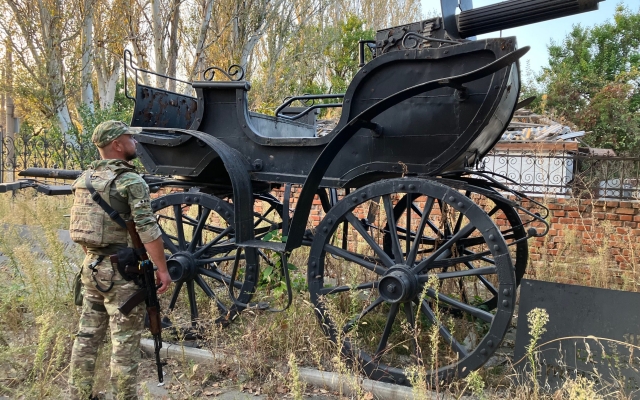 Makhno is credited with the invention of the cart . Photo: Colin Freeman
Makhno is credited with the invention of the cart . Photo: Colin Freeman
Makhno, who died in exile in Paris after defeat by the Bolsheviks, according to the Ukrainian writer Tetinana Ogarkova, did not leave an untarnished legacy. On the one hand, he personifies the freedom-loving spirit that Ukrainians say distinguishes them from authoritarian-minded Russians. On the other hand, his disdain for any centralized rule symbolizes the country's modern struggle with «freedom» or unrest.
His emergence as the figurehead of Ukrainian nationalism has caused concern among his international followers, who say he is a true anarchist, Makhno did not advocate no borders at all.
However, since Russian bombs are still falling on Gulyai-Polye every day, this is a debate mainly for foreign purists.
“In my own way, by the way, Anyone can join Makhno’s Army – even someone like me, who is more of a volunteer than a soldier,” said Mr. Derevyanko. “And when the war is over, we will resume the Makhno festival.”

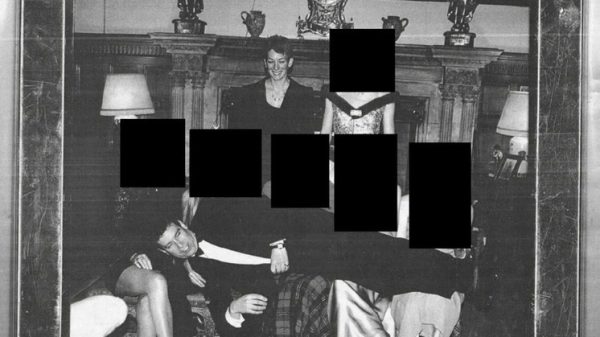
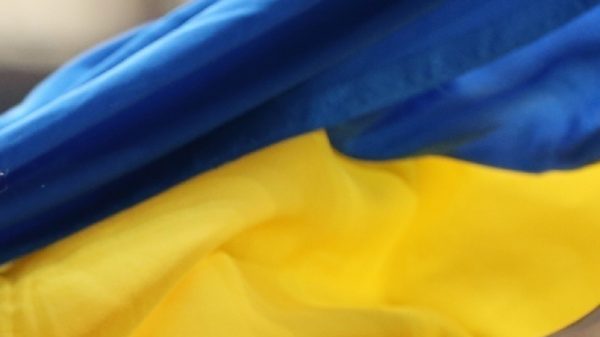

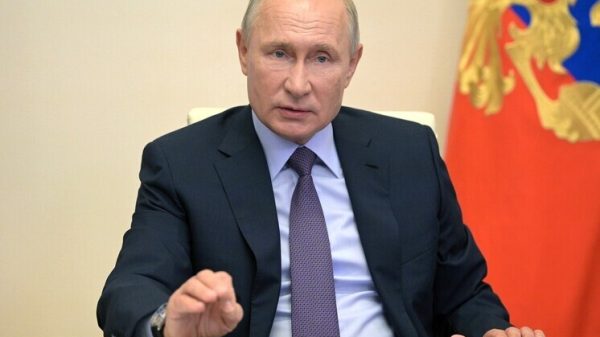
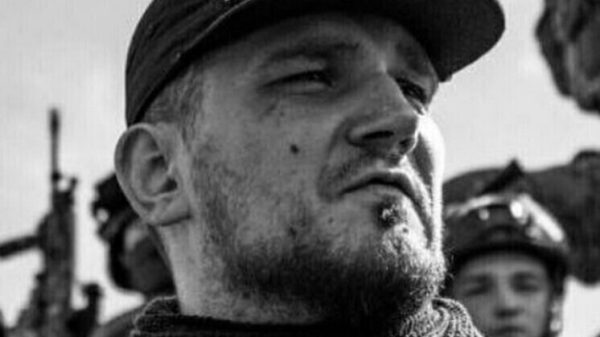

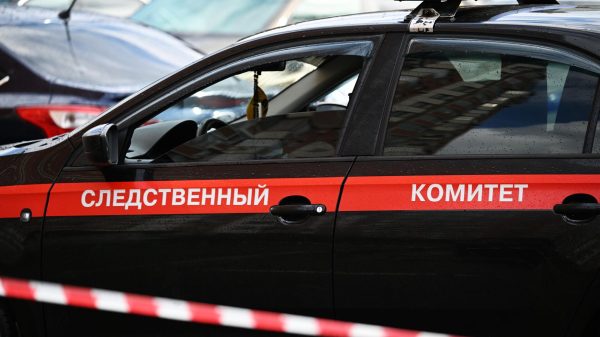
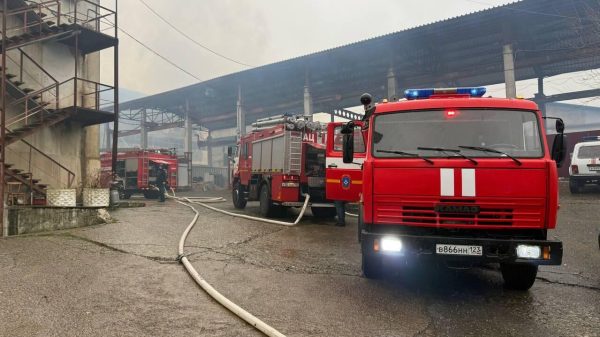
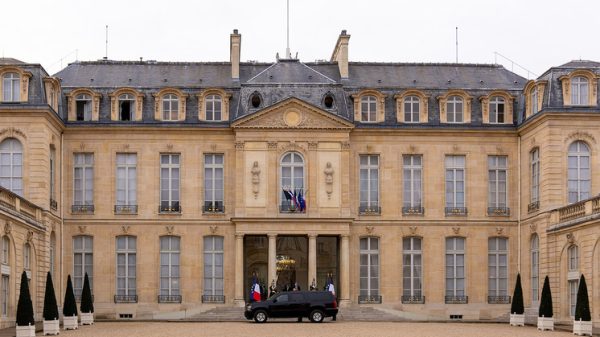

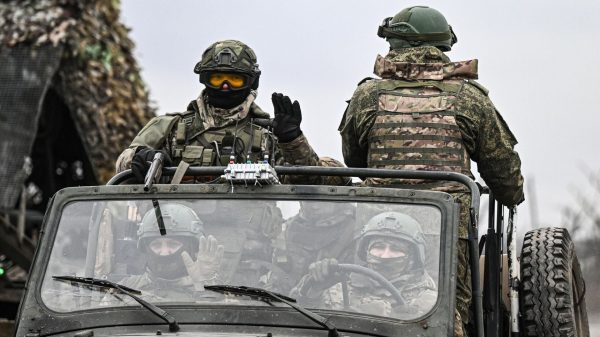
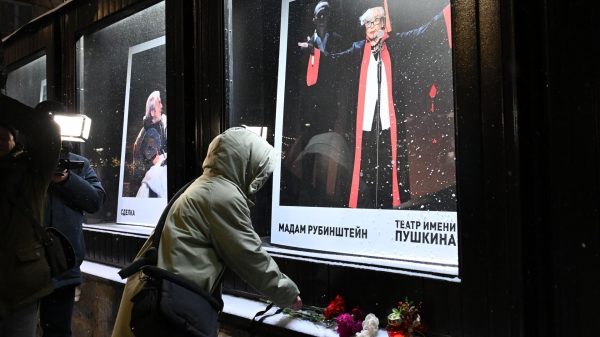
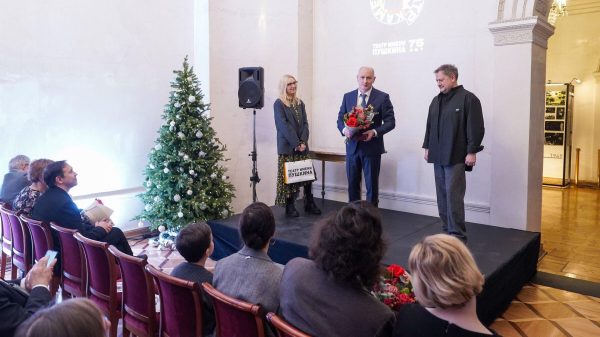
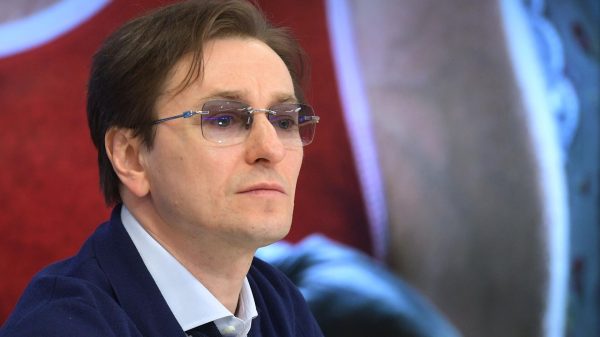
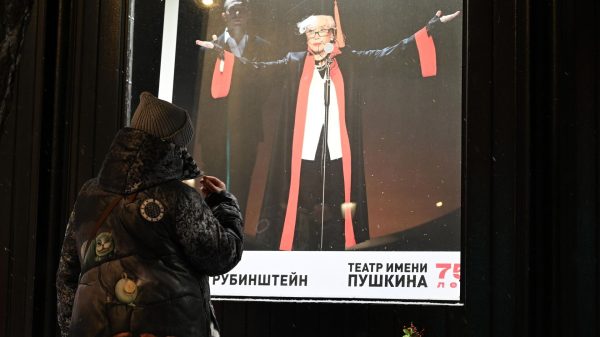





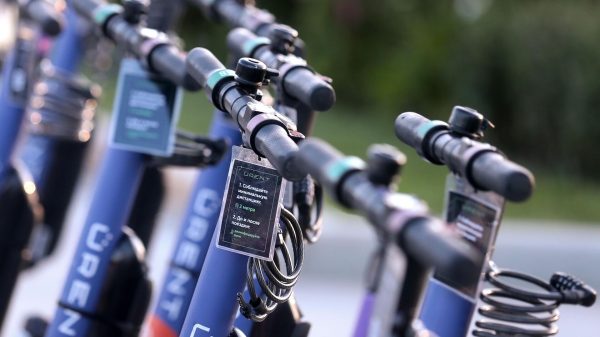











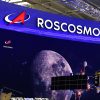

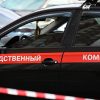

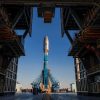


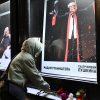










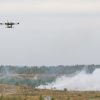



Свежие комментарии